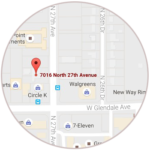
The American Cancer Society estimates 231,804 new cases of breast cancer in 2015. In 2010 the same organization estimated 207,909 new cases of breast cancer. As with all cancers, prevention is the best treatment. Estronex is a simple urine test that determines if a woman is at risk for estrogen-sensitive cancers and provides a plan to reduce that risk. How cool is that? If a person wants to be proactive in preventing cancers like breast cancer, colorectal cancer, uterine cancers, ovarian cancer and cervical cancer this is a “must have” test.

This is a HUGE deal!
Breast cancer is the FIRST most common cause of cancer death in women! Did you notice those numbers in the first two sentences? The number of breast cancer deaths is INCREASING! Look, if you’re okay with those numbers, just keep doing what you’re doing! However, if you would like to DO SOMETHING to help prevent cancer, then keep reading.
Risk factors for estrogen-sensitive cancers include:
- Prolonged use of oral contraceptives(5+ years)
- Synthetic hormone replacement therapy
- Family or personal history of breast cancer
- Obesity or sedentary lifestyle
- Consumption of 2 or more alcoholic drinks per day
- Getting older
- Never having children, or having your first after age 30
- Having high breast density shown on a mammogram
- Being exposed to large amounts of radiation
Anyone with some of these risk factors should consider getting the Estronex profile done.
How is Estronex a Screen for Cancer?
To help you understand how Estronex works check out this diagram:

At the top of the diagram sits DHEA. I call DHEA the “Mother Hormone” because nearly all other hormones are made from it. The body converts DHEA into Estrone, one of the main hormones we measure through blood work. Depending on factors like genetics, lifestyle, supplements, and diet, the body then converts Estrone into either good estrogen or bad estrogen.
The good estrogen, known as 2-hydroxyestrone (2-OHE1), plays a key role in cancer prevention in two ways. First, it inhibits the multiplication of cancer cells. Second, it protects estrogen-sensitive tissues—such as breast, cervical, uterine, and prostate tissue—from the harmful effects of bad estrogens. Go, good estrogen!
On the other hand, the bad estrogen, called 16-α-hydroxyestrone (16α-OHE1), promotes cancer by accelerating the multiplication of cancer cells. Boo, bad estrogen!
The Estronex test measures the levels of both good and bad estrogens. Ideally, you want a ratio of 2:1 or higher between good and bad estrogen, as a low ratio significantly increases the risk of estrogen-sensitive cancers.
The things that can lead to a low or bad ratio of good to bad estrogen are:
- Birth Control Pills
- High Levels of Toxins
- Plastic
- Smoking
- Heavy Metals
- Pesticides
- Hypothyroidism
- Obesity or Sedentary Lifestyle
- High Fat, Low Fiber Diet
- High Omega-6 Fatty Acids
- Alcohol Consumption
- Synthetic hormone replacement therapy
These things help increase a low (bad) ratio:
- Decrease coffee consumption and smoking
- Reduce alcohol comsumption
- Lower an elevated BMI
- Supplement with indole-3-carbinol (I3C) or di-indolemethane (DIM)
- Increase cruciferous vegetables including: broccoli, cabbage, and brussels sprouts
- Supplement with dried organic brussels sprouts and kale
- Increase ground flax seed
- Increase intake of fish oils (omega-3 fatty acids)
- Increase fruit and vegetable intake
- Soy isoflavones (genestein, daidzein)
- Consider alternatives to oral contraceptive use
What Can You Do?
If you’re feeling motivated after reading this and decide to dive into everything that boosts good estrogen, I do have a caution (though I love your enthusiasm!). If you raise your good estrogen levels too high, it can lead to osteoporosis. The body thrives on balance. The best approach is to take the Estronex test and then make decisions based on your individual results.
Your role could involve contacting me to schedule a test, sharing this information with a loved one, or posting it on your social media. Whatever action you choose, don’t hesitate to follow through. Cancer is serious, and every step matters!
Start Today!
Whether you’ve already had one of these cancers, or you already have these risk factors, or you just want to take good care of yourself, this test is for you. I can help you even if you can’t physically come into my office. This is powerful information that will give you direction on what you need to be doing or not doing to lower your risk of estrogen-sensitive cancers.



